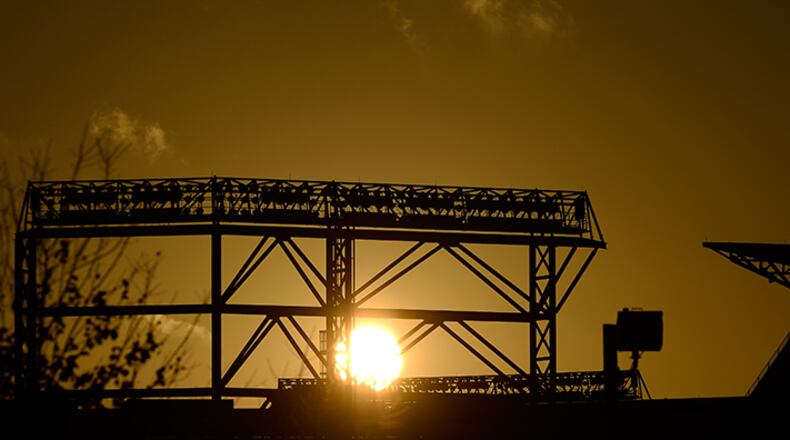In a few weeks, Turner Field and its parking lots — 77 acres of public land — will be for sale. The Atlanta Fulton County Recreation Authority announced last week it intends to release a Request For Proposals to solicit bids and plans from potential buyers.
The authority has not set a timeline for when it expects to reach a final decision. We do not know what the RFP will ask because there has been no formal collaboration with, or input from, the neighborhoods themselves. We do know that once built, how the land is developed will reshape Atlanta’s Summerhill, Peoplestown and Mechanicsville neighborhoods for generations.
While the authority has promised an “open, collaborative and competitive process” to redevelop Turner Field, its actions so far make us question whether this once-in-a-lifetime opportunity may go the way of Atlanta Underground — a shortened time frame geared to favor the one bidder who has already developed a proposal.
This is just one reason we do not expect many bidders if the proposed timeline is followed (mid-October release to mid-November deadline). Mayor Kasim Reed has made no secret of his preference for Georgia State University’s proposal. Responding to an RFP, drawing designs and answering the proposal is an investment of time and money for any developer. How many developers will be willing to make that investment when the mayor has already announced his winner?
Residents here have2 watched with a growing sense of foreboding the way major developments have been handled in the last year. They were hopeful when the city applied for and received a Livable Centers Initiative award from the Atlanta Regional Commission to conduct a community planning study. Slated to begin engaging stakeholders in November, this study will recommend best practices for developing a healthy, walkable community with Turner Field and its parking lots as the catalyst.
But the promise of developing a shared vision with the neighborhoods has been essentially gutted by the Recreation Authority’s position: Any potential developer must now submit plans before the study has even begun to solicit community input.
It doesn’t have to happen this way. The authority, with Mayor Reed’s leadership, could instead choose to use the Livable Centers Initiative as the powerful tool for transformational development that it was intended to be. According to the Regional Commission, LCI studies promote “the inclusion of pedestrian-friendly elements, mixed-use developments and a greater balance between jobs and housing,” and they “devise strategies that reduce traffic congestion and improve air quality by better connecting homes, shops and offices.”
Even without completion of the study, nothing prohibits the request for proposals from including common components of Livable Centers Initiative studies in its criteria: a restored street grid, smaller blocks, wide sidewalks and human-scale development. This is no substitute for the full LCI study, but it will demonstrate now some commitment to its principles.
Why is this so important? Simply put, a neighborhood built on Livable Centers Initiative principles is walkable and bikeable, with access to necessary goods and services for all people, regardless of age or automobile access — exactly the type of neighborhood our political leadership says we need in Atlanta.
While other Livable Centers Initiatives have had a more difficult road to completion because so much of a property was privately owned or already built, the Turner Field property is publicly owned and — with the exception of the stadium — a blank slate. All that is required is the decision of our policymakers, and this land can serve not just as a catalyst for a revitalized neighborhood, but as an example to developers throughout Atlanta.
Instead, Recreation Authority Executive Director Keisha Lance Bottoms has minimized the Livable Centers Initiative, noting the 77 acres of public land at its heart make up only a small percentage of the overall LCI study area, and that they are “just” recommendations. But we all know that what happens with this land — these acres of soon-to-be-vacant parking lots and this massive stadium — will dictate the success or failure of the surrounding neighborhoods and beyond.
Ultimately, our elected and appointed officials have a choice: development as usual, or a community-driven vision that could create Atlanta’s first neighborhood built around modern principles of urban planning, equitable growth and a less car-dependent future.
This is a golden opportunity to reclaim urban places once thought lost — by repairing the damage of environmental degradation, misguided infrastructure projects and designs that isolate the poor. Our leaders have the tools, and they have willing partners in the community. All that is lacking is the political will.
Matt Garbett is a resident of Adair Park and media chairman for the Turner Field Community Benefits Coalition.
About the Author
The Latest
Featured


